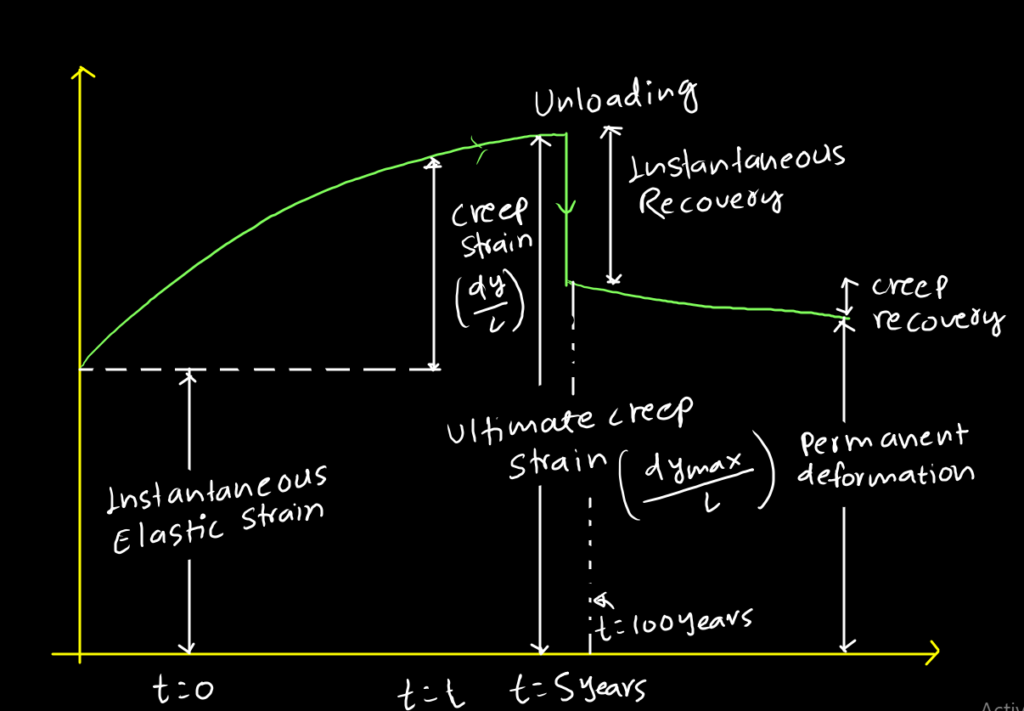Creep is due to sustain loading that is load for a long period of time. Here load is compressive and its deformation keeps on increasing with time, even though level is not changed. This time dependent component of deformation/Strain is termed as creep/plastic flow/time yield.


It is hard to understand creep and this is due to the following reasons :
1. Internal movement of absorbed water.
2. Viscous flow or sliding between gel particles.
3. Moisture loss.
4. Growth of Micro-Cracks.
5. Loss of prestress.
6. Gradual transfer of load from concrete to reinforcement.

The rate of creep decreases with time and its value at 5 years is considered to be Terminal value.
Factors Effecting Creep.
- Higher Cement Content.
- Higher W/C
- Lower aggregate Content
- High Temperature
- Size and thickness of member is small
- Loading is in early age.
Creep Coefficient/Ultimate Creep Coefficient
It can be defined as ratio of ultimate creep strain to that elastic strain.

Creep Coefficient depends on age of loading.

Note : For intermediate value of time, creep coefficient can be computed by interpolation however time must be on logscale.
Note : In design we consider an average value of modulus of Elasticity with same partial effect of creep only.
Effect of creep can be reduced by following
- High strength concrete.
- Delaying the application of finishes, partition wall etc.
- Adding reinforcement.
- Steam curing under pressure.


